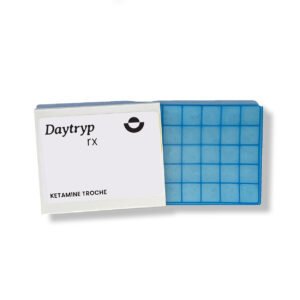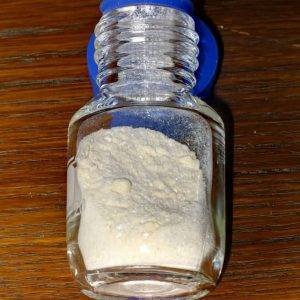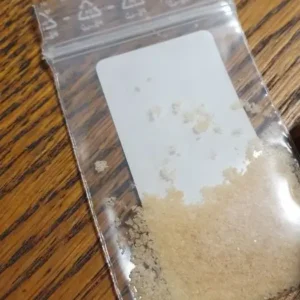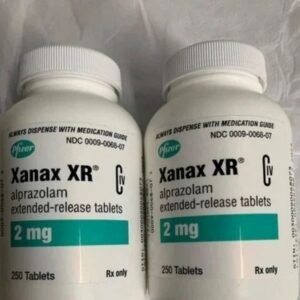What is Ketamine ?| Order Ketamine online
Ketamine is a dissociative anesthetic that produces a range of effects, including vivid hallucinations and a sense of detachment from one’s surroundings. It temporarily distorts sights and sounds, making the user feel disconnected and less in control.
Originally developed as a short-acting injectable anesthetic for both humans and animals, ketamine is classified as a “dissociate anesthetic” because it effectively disconnects a patient from their pain and environment.
When administered, ketamine can induce a state of deep relaxation, immobility, pain relief, and amnesia — preventing memory of events that occurred while under its influence.
Some people abuse ketamine recreationally for its dissociate effects and psychedelic-like experience. It has also, regrettably, been used to facilitate crimes such as sexual assault due to its sedative and memory-impairing properties.
-
- Magic Mushroom
P baeocystis
- $115.00 – $600.00Price range: $115.00 through $600.00
- Select options This product has multiple variants. The options may be chosen on the product page
-
- Magic Mushroom
blue meanie mushrooms
- $140.00 – $650.00Price range: $140.00 through $650.00
- Select options This product has multiple variants. The options may be chosen on the product page
-
- Ketamine
Liquid Ketamine
- $150.00 – $800.00Price range: $150.00 through $800.00
- Rated 4.00 out of 5
- Select options This product has multiple variants. The options may be chosen on the product page
-
- Ketamine
Ketamine Troche 200mg
- $180.00 – $800.00Price range: $180.00 through $800.00
- Rated 4.00 out of 5
- Select options This product has multiple variants. The options may be chosen on the product page
-
- EDIBLES
EDIBLE GUMMIES
- $150.00 – $1,200.00Price range: $150.00 through $1,200.00
- Rated 4.50 out of 5
- Select options This product has multiple variants. The options may be chosen on the product page
-
- Liquid LSD, Psychedelics
Liquid lsd
- $210.00 – $340.00Price range: $210.00 through $340.00
- Rated 4.33 out of 5
- Select options This product has multiple variants. The options may be chosen on the product page
-
- Fentanyl
Fentanyl
- $110.00 – $220.00Price range: $110.00 through $220.00
- Select options This product has multiple variants. The options may be chosen on the product page
-
- Magic Mushroom
Four sigmatic mushroom coffee
- $100.00 – $400.00Price range: $100.00 through $400.00
- Select options This product has multiple variants. The options may be chosen on the product page
-
- Sale!
- DMT
Buy 5-MeO-DMT online
- $220.00 – $1,000.00Price range: $220.00 through $1,000.00
- Select options This product has multiple variants. The options may be chosen on the product page
-
- Magic Mushroom
Psilocybe Cyanescens Mushroom
- $200.00 – $800.00Price range: $200.00 through $800.00
- Select options This product has multiple variants. The options may be chosen on the product page
-
- Sale!
- Magic Mushroom
Buy psilocybe azurescens
- $175.00 – $700.00Price range: $175.00 through $700.00
- Select options This product has multiple variants. The options may be chosen on the product page
-
- Oxycodone
Buy oxycodone online
- $150.00 – $420.00Price range: $150.00 through $420.00
- Rated 4.00 out of 5
- Select options This product has multiple variants. The options may be chosen on the product page
-
- MDMA
MDMA CRYSTAL
- $140.00 – $1,350.00Price range: $140.00 through $1,350.00
- Select options This product has multiple variants. The options may be chosen on the product page
-
- Ketamine
Ketamine Nasal spray
- $230.00
- Rated 4.00 out of 5
- Add to cart
-
- Sale!
- DMT
Buy 4-ACO DMT Online
- $180.00 – $1,300.00Price range: $180.00 through $1,300.00
- Select options This product has multiple variants. The options may be chosen on the product page
-
- DMT
Buy DMT Vape pens online
- $200.00 – $600.00Price range: $200.00 through $600.00
- Rated 5.00 out of 5
- Select options This product has multiple variants. The options may be chosen on the product page
-
- Sale!
- Magic Mushroom
Buy Cambodian Mushroom Online
- $200.00 – $1,000.00Price range: $200.00 through $1,000.00
- Rated 3.00 out of 5
- Select options This product has multiple variants. The options may be chosen on the product page
-
- Disposable vapes
BIG CHIEF DISPOSABLE VAPE
- $150.00 – $1,000.00Price range: $150.00 through $1,000.00
- Select options This product has multiple variants. The options may be chosen on the product page
-
- Sale!
- Disposable vapes
BIG CHIEF CARTS CBD BOX
-
$700.00Original price was: $700.00.$500.00Current price is: $500.00. - Add to cart
-
- Disposable vapes
MAD LABS CARTS
- $100.00 – $1,200.00Price range: $100.00 through $1,200.00
- Select options This product has multiple variants. The options may be chosen on the product page
-
- Disposable vapes
Stiiizy PODS
- $100.00 – $800.00Price range: $100.00 through $800.00
- Select options This product has multiple variants. The options may be chosen on the product page
-
- Mushroom liquid Culture
Mushroom liquid Culture Syringes
- $100.00 – $850.00Price range: $100.00 through $850.00
- Select options This product has multiple variants. The options may be chosen on the product page
-
- Psychedelic water
Buy Psychedelic Water online
- $60.00 – $330.00Price range: $60.00 through $330.00
- Select options This product has multiple variants. The options may be chosen on the product page
-
- Disposable vapes
Geek bar disposable vapes
- $120.00 – $850.00Price range: $120.00 through $850.00
- Select options This product has multiple variants. The options may be chosen on the product page
-
- Mushroom chocolate bars
Cap Up Chocolate bar
- $150.00 – $1,000.00Price range: $150.00 through $1,000.00
- Select options This product has multiple variants. The options may be chosen on the product page
-
- Mushroom chocolate bars
Alice Mushroom Chocolates
- $100.00 – $1,800.00Price range: $100.00 through $1,800.00
- Rated 4.80 out of 5
- Select options This product has multiple variants. The options may be chosen on the product page
-
- Lion's Mane Mushroom Liquid Culture Syringe
Lion’s Mane Mushroom Liquid Culture Syringe
- $150.00 – $900.00Price range: $150.00 through $900.00
- Select options This product has multiple variants. The options may be chosen on the product page
-
- Live Resin Gummies
LIVE RESIN GUMMIES | lime Gummies
- $130.00 – $1,000.00Price range: $130.00 through $1,000.00
- Select options This product has multiple variants. The options may be chosen on the product page
-
- Magic Mushroom
Magic mushrooms
- $200.00 – $1,000.00Price range: $200.00 through $1,000.00
- Rated 4.50 out of 5
- Select options This product has multiple variants. The options may be chosen on the product page
-
- Disposable vapes
STIIIZY disposable
- $130.00 – $2,000.00Price range: $130.00 through $2,000.00
- Rated 5.00 out of 5
- Select options This product has multiple variants. The options may be chosen on the product page
-
- Mushroom chocolate bars
Fusion bar
- $130.00 – $1,000.00Price range: $130.00 through $1,000.00
- Rated 3.78 out of 5
- Select options This product has multiple variants. The options may be chosen on the product page
-
- Magic Mushroom
B+ mushrooms
- $120.00 – $680.00Price range: $120.00 through $680.00
- Rated 5.00 out of 5
- Select options This product has multiple variants. The options may be chosen on the product page
-
- Xanax
Xanax
- $250.00 – $1,400.00Price range: $250.00 through $1,400.00
- Rated 4.50 out of 5
- Select options This product has multiple variants. The options may be chosen on the product page
-
- Disposable vapes
Cake Disposable Vape
- $150.00 – $900.00Price range: $150.00 through $900.00
- Select options This product has multiple variants. The options may be chosen on the product page
-
- Magic Mushroom
Albino Penis Envy
- $150.00 – $900.00Price range: $150.00 through $900.00
- Rated 4.00 out of 5
- Select options This product has multiple variants. The options may be chosen on the product page
-
- Mushroom chocolate bars
One Up Chocolate Bar
- $150.00 – $900.00Price range: $150.00 through $900.00
- Rated 3.00 out of 5
- Select options This product has multiple variants. The options may be chosen on the product page
-
- Disposable vapes
Muha Meds 2g
- $100.00 – $1,000.00Price range: $100.00 through $1,000.00
- Rated 5.00 out of 5
- Select options This product has multiple variants. The options may be chosen on the product page
-
- Disposable vapes
Packman disposable vapes 2g
- $150.00 – $900.00Price range: $150.00 through $900.00
- Rated 5.00 out of 5
- Select options This product has multiple variants. The options may be chosen on the product page
-
- Disposable vapes
Fryd Extracts
- $150.00 – $1,000.00Price range: $150.00 through $1,000.00
- Rated 5.00 out of 5
- Select options This product has multiple variants. The options may be chosen on the product page
-
- Mushroom chocolate bars
Polkadot Mushroom chocolate bar
- $100.00 – $700.00Price range: $100.00 through $700.00
- Rated 5.00 out of 5
- Select options This product has multiple variants. The options may be chosen on the product page
-
- Microdose
Psilocybin Microdose Capsules
- $100.00 – $900.00Price range: $100.00 through $900.00
- Rated 5.00 out of 5
- Select options This product has multiple variants. The options may be chosen on the product page
-
- Magic Mushroom
golden teacher mushroom
- $200.00 – $1,000.00Price range: $200.00 through $1,000.00
- Rated 5.00 out of 5
- Select options This product has multiple variants. The options may be chosen on the product page
-
- Magic Mushroom
Penis Envy
- $200.00 – $1,000.00Price range: $200.00 through $1,000.00
- Rated 5.00 out of 5
- Select options This product has multiple variants. The options may be chosen on the product page
-
- Crystal Meth
Crystal Meth
- $200.00 – $1,500.00Price range: $200.00 through $1,500.00
- Select options This product has multiple variants. The options may be chosen on the product page
-
- Magic Mushroom
Magic Mushroom
- $200.00 – $1,000.00Price range: $200.00 through $1,000.00
- Rated 5.00 out of 5
- Select options This product has multiple variants. The options may be chosen on the product page
-
- MDMA
MDMA
- $100.00 – $1,000.00Price range: $100.00 through $1,000.00
- Rated 4.00 out of 5
- Select options This product has multiple variants. The options may be chosen on the product page
-
- DMT
DMT
- $200.00 – $600.00Price range: $200.00 through $600.00
- Rated 5.00 out of 5
- Select options This product has multiple variants. The options may be chosen on the product page
-
- LSD
LSD
- $100.00 – $1,600.00Price range: $100.00 through $1,600.00
- Rated 5.00 out of 5
- Select options This product has multiple variants. The options may be chosen on the product page
-
- cannabis
Cannabis
- $200.00 – $2,000.00Price range: $200.00 through $2,000.00
- Rated 4.64 out of 5
- Select options This product has multiple variants. The options may be chosen on the product page
What Is the Origin of ketamine?
Ketamine is produced legally in a number of countries, including the United States. However, much of the ketamine that finds its way into the illegal market in the USA is diverted or stolen from legitimate sources particularly veterinary clinics or smuggled across the border from Mexico.
Distribution typically occurs through friend groups and acquaintances, frequently at raves, nightclubs, and private parties. Street sales of ketamine are relatively rare.
How Is ketamine Abused?
Ketamine, along with other “club drugs,” has become popular among teens and young adults who use it recreationally at dance clubs and raves.
Ketamine is manufactured commercially in both liquid and powder form. To produce a powdered form, the liquid is often evaporated using methods such as hot plates, warming trays, or microwaves.
Once in powder form, it can be snorted or pressed into pills; the liquid form may be injected directly or added to drinks.

What Are Common Street Names for Ketamine?
Some frequently used street names for ketamine include:
- Cat Tranquilizer
- Cat Valium
- Jet K
- Kit Kat
- Purple
- Special K
- Special La Coke
- Super Acid
- Super K
- Vitamin K
What Does it Look Like?
Ketamine typically comes in two forms:
Liquid: A clear solution, often used for injection or adding to drinks.
Powder: A white or off-white crystalline powder.
Powdered ketamine (typically 100–200 milligrams) is frequently packaged in small glass vials, tiny plastic bags, capsules, or paper, glassine, or aluminum foil folds.
The powder form is commonly cut into small lines, called “bumps”, and then snorted, or it may be smoked — often by adding it to a joint with tobacco or cannabis. The liquid form may be injected directly or mixed into beverages.
Ketamine is sometimes found alongside, or in combination with, drugs like MDMA, amphetamine, methamphetamine, or cocaine.
What Are the Effects of ketamine on the Mind?
Ketamine produces vivid hallucinations and profoundly distorts a person’s perception of sight and sound. It makes the user feel disconnected from their surroundings and a reduced sense of control.
Some people refer to a “Special K” trip as more desirable than LSD or PCP because its effects are shorter, typically lasting 30–60 minutes instead of several hours.
Slang terms associated with the effects of ketamine include:
- “K-land” — a mellow, colorful experience
- “K-hole” — an out-of-body, near-death experience
- “Baby food” — a state of blissful, infant-like inertia
- “God” — a feeling of having met a higher power
The onset of effects is typically rapid — within minutes — although taking it orally results in a slightly slower onset.
Some people may experience Hallucinogen Persisting Perception Disorder (HPPD) weeks after use, causing unwanted effects that were present during the original experience.
Ketamine may also cause agitation, depression, memory and cognitive difficulties, unconsciousness, and amnesia.
What Are the Effects of ketamine on the Body?
A few minutes after taking ketamine, the user’s heart rate and blood pressure may increase, then gradually diminish over the following 10–20 minutes.
Ketamine can affect motor control and responses to external stimuli. While under its influence, a person may experience:
- Rapid, involuntary eye movements
- Dilated pupils
- Drooling
- Tearing
- Muscle stiffness
- Nausea
What Are its Overdose Effects?
A ketamine overdose can cause unconsciousness and dangerously slow breathing, which can be life-threatening if not treated promptly.
Drugs That Produce Similar Effects as ketamine
Other drugs that can produce similar effects to ketamine include:
- Other hallucinogens: LSD, PCP, mescaline
- Drugs with sedative or amnesiac properties: GHB, Rohypnol®
These drugs are sometimes misused to facilitate sexual assault due to their ability to impair memory and senses.
What Is the Legal status of ketamine in the USA?
Ketamine has been classified as a Schedule III non-narcotic substance under the Controlled Substances Act since 1999.
It has accepted medical uses as a short-acting injectable anesthetic in both human and veterinary practice.
In 2019, the S(+) enantiomer of ketamine (esketamine) nasal spray (sold under the name Spravato®) was approved by the FDA for treatment-resistant depression. It must be administered in a certified doctor’s office or clinic.
Ketamine has abuse potential and may lead to low or moderate physical dependence and a high degree of psychological dependence.


































































